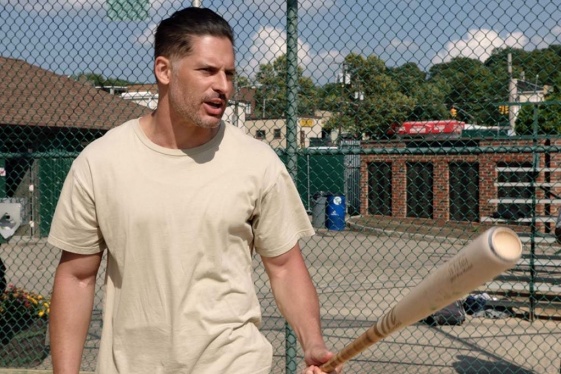

BY: Bill Dal Cerro
A huge warehouse. Rival gangs. Bad blood. It all came together when a group of gangsters, dressed as outsiders, surprised their rivals and murdered them in cold blood on a cold February day. We all know the story: the St. Valentine’s Day Massacre in Chicago, Feb. 14, 1929.
Actually, no. The gang rub-out described above refers to the Wah Mee Massacre of Feb, 19, 1983, which took place in Seattle. Thirteen gangsters were brutally murdered as opposed to the seven who were killed in Chicago, thus making it the worst mass gang slaying in American history. And yet, no one knows about this infamous event. The reason? The gangsters were Asian Americans.
I bring this up not to stigmatize Asian Americans, but to point out a major hypocrisy inspired by the release of Martin Scorsese’s new mob film, “The Irishman”: Hollywood continues to stigmatize Italian Americans as the true gangsters of America, even in an era of alleged sensitivity and respect.
Since 1915, with the release of the short film “The Italian,” Tinsel Town has had a field day perpetuating images of Italians, both male and female, as criminals at worst, cretins as best. Yet, although Italians have made tremendous strides at every level of American society over the past 120 years, our media image, to quote another current film, remains “frozen.”
To show you how much of an amazing influence Italians have had in our nation, here is a random sampling of “American” businesses and inventions that were created by Italian Americans: the Bank of America, Planter’s Peanuts, Tropicana orange juice, the Radio Flyer red wagon, Barnes and Noble bookstores, the Securities and Exchange Commission, the pilot ejector seat, the first computer microchip processor, the shopping mall, multicultural education, the Jacuzzi, the Zamboni, and even the McDonald’s Big Mac.
The Italic Studies Institute conducted a research study of the Italian-American image in movies over the past century (1915-2015), and it confirmed our suspicions: Stereotypes of Italian Americans have become institutionalized.
Among those findings, two were especially disturbing.
After the success of the 1972 film “The Godfather,” there was a 440 percent increase in the number of mob movies produced by Hollywood over the next four decades, from 98 to 438.
Even more disturbing: Nearly 90 percent of mob films feature Italian gangster characters who have no basis in reality. In other words, for every film about, say, Al Capone, another eight mob movies told totally fabricated gangster tales.
“Reel life” dominates “real life.” Worse yet, the handful of films based on true stories, such as “The Irishman,” are used by people to rationalize Hollywood’s fixation on Italian criminals: “See? The mob existed! You Italian Americans are in denial!”
So what is the ultimate damage of a film like “The Irishman,” other than perpetuating a popular prejudice about our community? Like the infamous Berlin Wall, Hollywood’s focus on Italian criminals (real and imagined) literally puts blinders on audiences and denies us our own true history.
For example: After the 2008 U.S. market collapse, where was the Hollywood biopic of 1960s activist Mario Savio, whose Free Speech Movement criticized such corporate greed? This past year, when the media celebrated the 50th anniversary of the Apollo Moon Landing, where was the Hollywood biopic on Dr. Rocco Petrone, who headed NASA at the time? Yes, a scientist named “Rocky” guided that fabled flight.
In 1987, Chicago Tribune columnist Mike Royko coined the term “The Godfather Syndrome,” a nod to how anti-Italian prejudice blocked one of our finest politicians, the late Mario Cuomo, from running from president.
Instead of Cuomo, it is Don Vito Corleone and Tony Soprano, both fictional, who remain the poster boys of Italian culture in America.
It’s time for Hollywood bigots — and those who enable their twisted negativity — to finally wake up and smell the cappuccino. Basta!
You may be interested
-
New York Italians Movie Night: "C'eravamo ta...
Dear Friends, New York Italians in collaboration with Fordham University, Department...
-
'A League of Their Own' director Marshall dea...
Actress and director Penny Marshall, whose love of sports made her a regular in the Los An...
-
'All Over the World I’m Bobby Bacala. And I’m...
Every episode of The Sopranos was uniquely wonderful and horrible, at once forcing me with...
-
'Avengers: Infinity War' Directors Inducted I...
The Russo Brothers were a pair of the Marvel Cinematic Universe's best directors even prio...
-
'Boardwalk Empire' Season 5 News: Vincent Pia...
Recently, actor Vincent Piazza, who plays up-and-coming gangster Lucky Luciano on the show...
-
'Bottom of the 9th': Film Review
With films like Two Family House and City Island, director Raymond De Felitta found easy c...
-
'Buongiorno Papà' vince Nice Festival Usa
'Buongiorno papà' di Edoardo Leo, film sui quarantenni single in Italia, interpretato da R...
-
'Cabrini' film features nearly 40 Buffalo loc...
Parts of Western New York have transformed into movie sets as crews filming "Cabrini" take...










